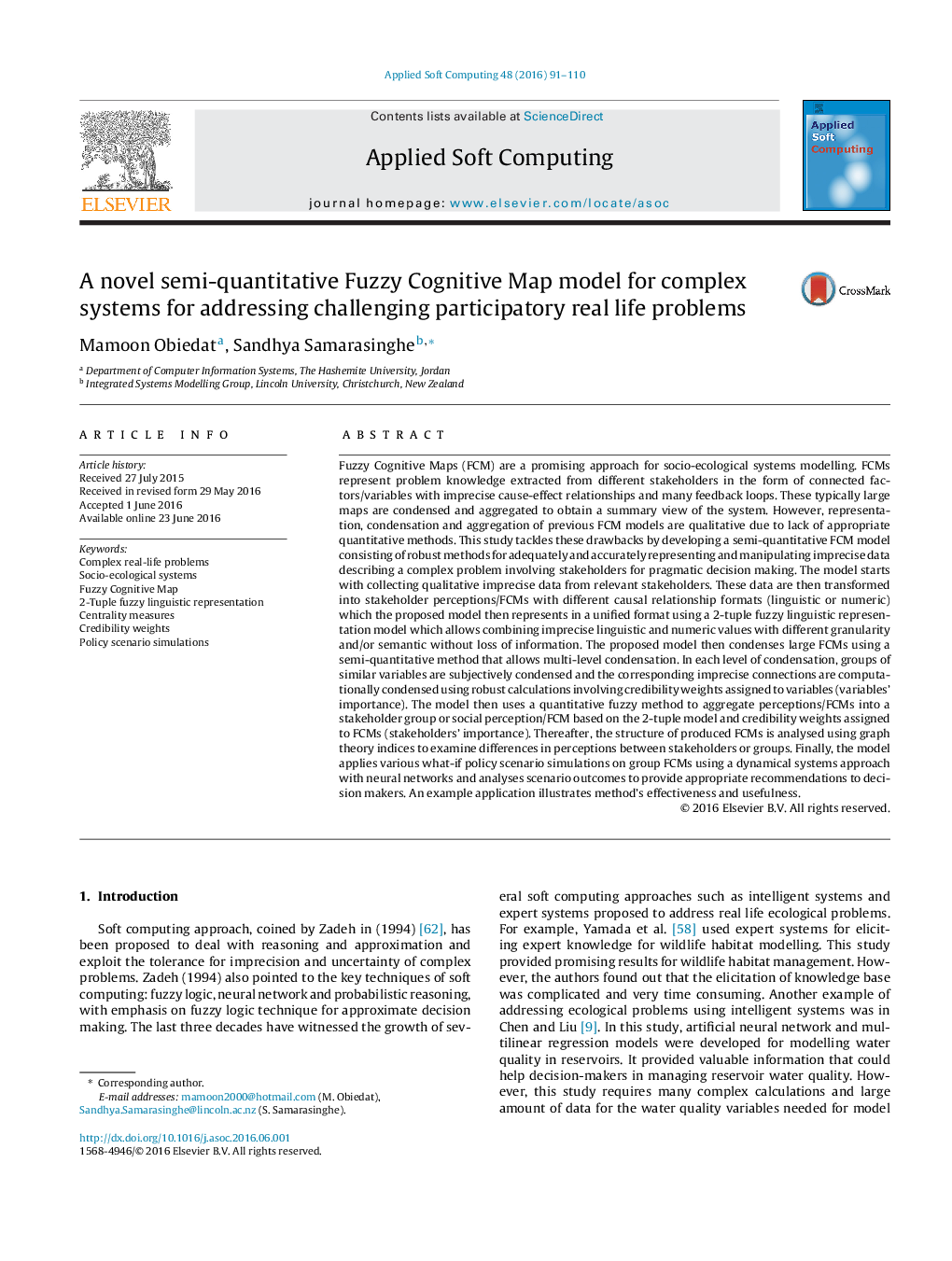| Article ID | Journal | Published Year | Pages | File Type |
|---|---|---|---|---|
| 494536 | Applied Soft Computing | 2016 | 20 Pages |
•A novel semi-quantitative Fuzzy Cognitive Map (FCM) model consisting of 8 integrated steps for complex systems is developed.•Model enhances the fuzzy 2-tuple approach to accept negative numeric and linguistic inputs and uses this approach in all computational processes.•Credibility weights of FCM nodes and FCMs obtained based on novel centrality measures are used in the condensation and aggregation of FCMs.•Uses what-if policy scenarios in FCM simulations that lead to effective recommendations for improving system responses.•Demonstrates a successful application of the method to a complex real life problem.
Fuzzy Cognitive Maps (FCM) are a promising approach for socio-ecological systems modelling. FCMs represent problem knowledge extracted from different stakeholders in the form of connected factors/variables with imprecise cause-effect relationships and many feedback loops. These typically large maps are condensed and aggregated to obtain a summary view of the system. However, representation, condensation and aggregation of previous FCM models are qualitative due to lack of appropriate quantitative methods. This study tackles these drawbacks by developing a semi-quantitative FCM model consisting of robust methods for adequately and accurately representing and manipulating imprecise data describing a complex problem involving stakeholders for pragmatic decision making. The model starts with collecting qualitative imprecise data from relevant stakeholders. These data are then transformed into stakeholder perceptions/FCMs with different causal relationship formats (linguistic or numeric) which the proposed model then represents in a unified format using a 2-tuple fuzzy linguistic representation model which allows combining imprecise linguistic and numeric values with different granularity and/or semantic without loss of information. The proposed model then condenses large FCMs using a semi-quantitative method that allows multi-level condensation. In each level of condensation, groups of similar variables are subjectively condensed and the corresponding imprecise connections are computationally condensed using robust calculations involving credibility weights assigned to variables (variables’ importance). The model then uses a quantitative fuzzy method to aggregate perceptions/FCMs into a stakeholder group or social perception/FCM based on the 2-tuple model and credibility weights assigned to FCMs (stakeholders’ importance). Thereafter, the structure of produced FCMs is analysed using graph theory indices to examine differences in perceptions between stakeholders or groups. Finally, the model applies various what-if policy scenario simulations on group FCMs using a dynamical systems approach with neural networks and analyses scenario outcomes to provide appropriate recommendations to decision makers. An example application illustrates method’s effectiveness and usefulness.
Graphical abstractFigure optionsDownload full-size imageDownload as PowerPoint slide
